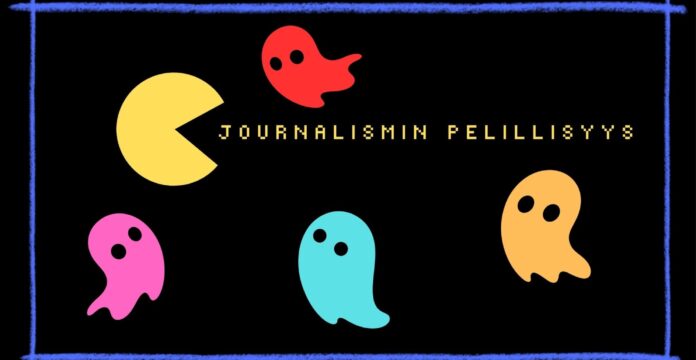Can our actions have a significant impact in tackling climate change?
It is possible that we have already asked ourselves about how our contributions as individuals or community can make a real impact on mitigating climate change. We usually underestimate our capabilities, because as a community we can have a significant influence in decision making, as long as we decide to assume an active role. From taking individual actions in our homes to reduce electricity consumption, using energy efficient appliances, improving the systems of insulation or opting for electric cars, to actively participating in collectively projects – these are steps towards community actions.
Community: The key player in the energy transition
Communities around the world are key players in building cleaner energy systems. For instance, with the rise of “Open Science”, not only research institutes and universities are conducting scientific projects (Mustajoki, 2018). In fact, communities are discovering that they can actively participate in research projects to confront problems that currently affect us, such as climate change. “Citizen Science” or “Civil Science” is demystifying the paradigm that “scientific knowledge is only built by scientists” (Citizen Science Association, 2007). Communities are starting to produce valuable knowledge in terms of how to deal with the energy transition since communities are the ones facing the severe consequences of climate change every day.
Another very interesting phenomenon is the growth of new decentralised energy systems. A significant number of decentralised energy systems have been initiated from communities, which have decided to take part in the energy transition towards low carbon technologies, and indeed, they have evolved already from taking the role of consumers to becoming “prosumers”.
Several communities have decided to create grid-connected micro grids, where sources of energy generation are diversified or ”decentralised”. One of the main features of decentralised energy systems is the use of low-carbon energy resources, such as solar light in solar photovoltaic panels and heat collectors, wind turbines, production of biofuels, electricity, and heat derived from waste, among others. These actions are revolutionizing the paradigms of traditional “top-down energy systems”, towards the construction of new decentralised “bottom-up energy systems”, where the system structure is built through innovative actions undertaken by communities in conjunction with other actors. There are still important challenges to overcome, such as technical constraints related to the balance between the demand and supply of energy, as well as the requirements for interconnecting them with the main grid and monitoring them (Quaresma Santos et al., 2018). Some good news for us is the positive results already demonstrated by micro grids in terms of reducing greenhouse gas emissions.
“Unity is strength”: New multi-sector partnerships
Communities do not need to act alone, because ”unity is strength”. Collective groups can establish new schemes to join the effort with municipalities/regional authorities and private companies to achieve greater impact and sustainability. These schemes are known as ”multi-sector partnerships” (Sukholthaman, Shirahada and Sharp, 2017). This type of tripartite scheme deserves to be explored in order to build strong alliances between the community, public sector and private companies, where the strengths of each actor can be exploited both in the creation of valuable knowledge and the construction of sustainable energy systems, thus building a unified synergy.
Why is it important to work in tripartite schemes (public-private-community partnerships) towards cleaner energy systems?
One of the most important reasons to work in partnerships is the possibility to overcome some barriers in the construction of cleaner energy systems; for example:
- Obtaining funding for research in climate change abatement.
- Joining together expertise for research in new paths for the energy transition.
- Achieving a greater audience for the dissemination of knowledge and practical applications.
- Obtaining funding for the development of emerging technologies.
- Compliance with environmental obligations of decentralised energy systems: Licenses and environmental permits.
- Obtaining complete information on energy regulation in the context of decentralised energy systems (obligations, barriers and incentives).
- Solving the difficulties for integration and interaction with grid operators in decentralised energy systems (interaction with current operators, measurement systems, etc.).
- Overcoming the relative complexity of operation and maintenance activities of decentralised energy systems (according to technology).
- Breaking down market barriers to sell surplus energy from micro networks.
The most important duty in partnerships is to establish clear conditions for the copyright of intellectual deliverables, as well as risk sharing, facilities ownership, and fair contractual agreements.
Which opportunities can arise from the tripartite partnerships collaboration systems?
Tripartite partnerships present significant advantages in the evolution to cleaner energy systems, such as the construction of cohesive and more efficient actions. According to Sukholthaman, Shirahada and Sharp (2017), tripartite schemes are currently used to increase the efficiency of waste management in urban areas, given the necessary collaboration between the different actors to achieve the reduction of impacts related to waste disposal.
Tripartite benefits from tripartite partnerships
In summary, in the context of transition to cleaner energy systems, tripartite partnerships offer an interesting option for the reduction of greenhouse emissions. Simultaneously, communities can improve the quality of life, such as in expanding their knowledge of and skills in low-carbon technologies, creating successful projects, creating new opportunities for business models for employment and services, capturing value from previously unexplored resources; thus, producing significant environmental, social and economic contributions to society and tackling climate change.
Therefore, this is a special invitation to work in partnership, as a student, scientist, part of a public institution, an employee of a private company, entrepreneur, a community member: we can all together contribute with our actions to achieve a common goal: A better world for the next generations. Unity is strength!
Giovanna Andrea Pinilla De La Cruz
Doctoral student

**
References
Citizen Science Association (2007) ‘What is this, “Citizen Science”?’, in Citizen Science Toolkit Conference. Ithaca, NY, p. 610363. Available at: www. citizenscience.org/conference.
Mustajoki, H. (2018) Finnish Open Science Online Resource, Ministry of Education and Culture, Finland . University of Helsinki. Available at: http://www.findocnet.fi (Accessed: 9 February 2019).
Quaresma Santos, A. et al. (2018) ‘Framework for Microgrid Design Using Social, Economic, and Technical Analysis’, Energies, 11(2832). doi: 10.3390/en11102832.
Sukholthaman, P., Shirahada, K. and Sharp, A. (2017) ‘Toward effective multi-sector partnership: A case of municipal solid waste management service provision in Bangkok, Thailand’, Kasetsart Journal of Social Sciences. Elsevier Ltd, 38(3), pp. 324–330. doi: 10.1016/j.kjss.2017.05.004.



